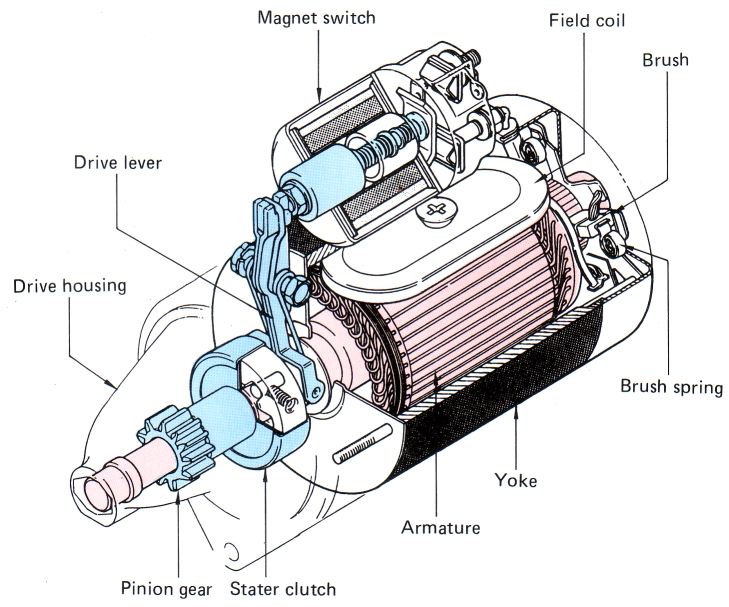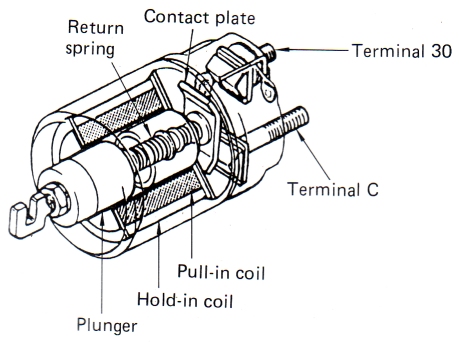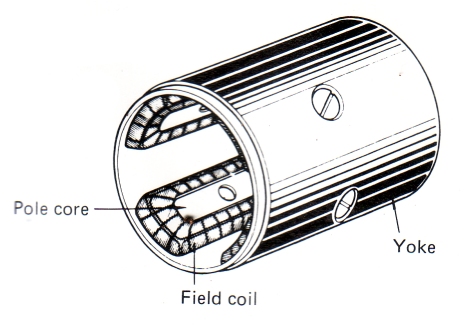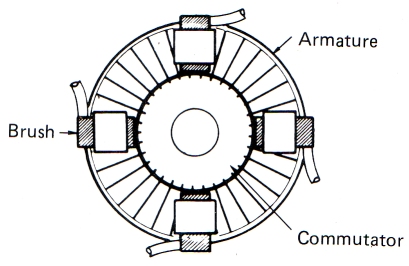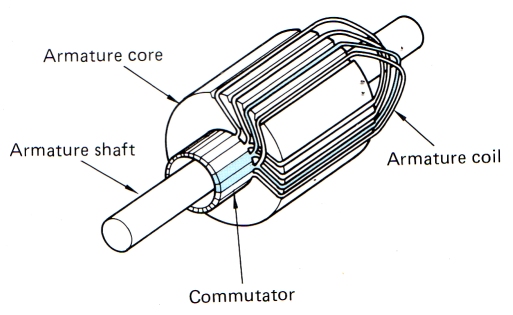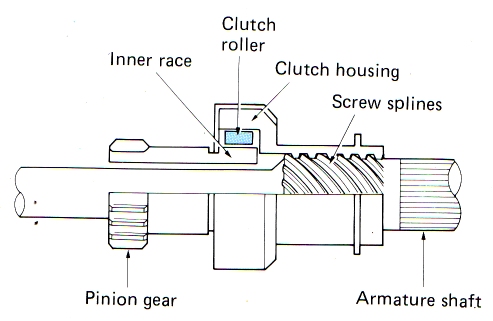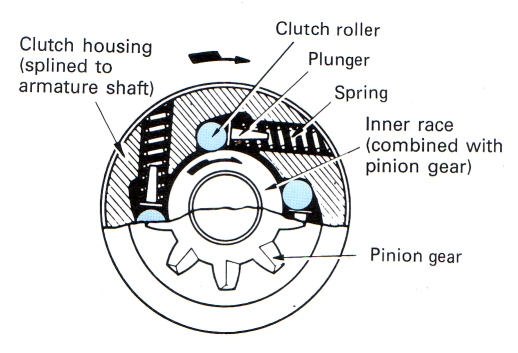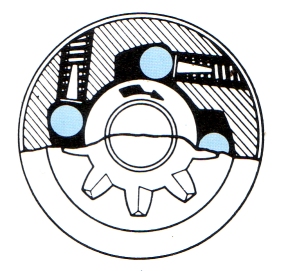Tech:Electrical/Starter Motor/Conventional Type: Difference between revisions
MedicineMan (talk | contribs) No edit summary |
MedicineMan (talk | contribs) No edit summary |
||
| Line 59: | Line 59: | ||
[[Image:Conventional Starter Clutch Drive.jpg]] | [[Image:Conventional Starter Clutch Drive.jpg]] | ||
* ''Starter Clutch During Cranking'' | |||
The rotating armature tries to force the clutch housing to which it is splined, To rotate faster than the inner race, Which is combined with the pinion gear. The clutch rollers are therefore forced to roll toward the narrower sections between the clutch housing and inner race until they jam between the clutch housing and the inner race. As a result, The rollers transfer the rotational movement of the clutch housing to the inner race and thence to the pinion gear. | The rotating armature tries to force the clutch housing to which it is splined, To rotate faster than the inner race, Which is combined with the pinion gear. The clutch rollers are therefore forced to roll toward the narrower sections between the clutch housing and inner race until they jam between the clutch housing and the inner race. As a result, The rollers transfer the rotational movement of the clutch housing to the inner race and thence to the pinion gear. | ||
| Line 65: | Line 65: | ||
[[Image:Conventional Starter Clutch Drive Cranking.jpg]] | [[Image:Conventional Starter Clutch Drive Cranking.jpg]] | ||
* ''Starter Clutch After Engine Is Started''. | |||
Once the engine has started, Its torque tries to force the inner race to rotate faster than the clutch housing. The clutch rollers therefore roll against the springs towards the wider sections inside the housing. As a result, The clutch housing and the inner race disengage to prevent the starter clutch from transmitting the engine torque from the pinion gear to the starter motor. | Once the engine has started, Its torque tries to force the inner race to rotate faster than the clutch housing. The clutch rollers therefore roll against the springs towards the wider sections inside the housing. As a result, The clutch housing and the inner race disengage to prevent the starter clutch from transmitting the engine torque from the pinion gear to the starter motor. | ||
Revision as of 10:41, 27 June 2007
Conventional Type
Construction
This type of starter motor contains a magnetic switch, Electric motor, Drive lever, Pinion gear, Starter clutch etc. The pinion gear is located on the same axis as the armature and rotates at the same speed as it. The drive lever connected to the magnetic switch plunger pushes the pinion gear and and causes it to mesh with the ring gear.
1. Magnetic switch.
The magnetic switch (Also referred to as a Solenoid) consists of a hold-in coil, Pull-in coil, A return Spring, A plunger and other components. It is activated by the magnetic forces generated in the coils and carries out the following two functions:
- It pushes the pinion gear so that it meshes with the ring gear.
- It serves as a main switch or relay, Allowing heavy current to pass from the battery to the starter motor.
2. Field Coils.
The electrical current from the magnetic switch flows through the field coils, Which generate the magnetic field required to rotate the armature.
3. Brushes.
The brushes, pressed against the segments of the armature commutator by the brush springs, Allow the current to pass from the field coils to the armature.
Weakened brush springs or worn brushes
may lead to insufficient electrical contact
between the brushes and the segments of the
commutator. The resulting excessive electrical
resistance at the contact points will reduce
the supply of current to the motor,
Impeding torque build-up.
4. Armature.
The armature, The revolving component of the motor, Consists of the armature core, Armature coils, Commutator, etc. It revolves as a result of the interaction between the magnetic fields generated by the armature coils and the field coils.
5. Starter Clutch.
The starter motor must crank the engine until the engine fires and starts to run on its own. Once the engine has started, However, It would force the starter motor to rotate at a much higher speed than that for which it is designed, Which would damage the starter motor. The starter clutch is a one-way clutch which protects the starter motor from this. Although the construction of the starter clutch used for the conventional type starter motor is somewhat different from that used for the reduction type starter motor, The principle and operation of each is essentially the same.
Although the construction of the starter clutch used for the conventional type starter motor is somewhat different from that used for the reduction type starter motor, The principle and operation of each is essentially the same.
- Starter Clutch During Cranking
The rotating armature tries to force the clutch housing to which it is splined, To rotate faster than the inner race, Which is combined with the pinion gear. The clutch rollers are therefore forced to roll toward the narrower sections between the clutch housing and inner race until they jam between the clutch housing and the inner race. As a result, The rollers transfer the rotational movement of the clutch housing to the inner race and thence to the pinion gear.
- Starter Clutch After Engine Is Started.
Once the engine has started, Its torque tries to force the inner race to rotate faster than the clutch housing. The clutch rollers therefore roll against the springs towards the wider sections inside the housing. As a result, The clutch housing and the inner race disengage to prevent the starter clutch from transmitting the engine torque from the pinion gear to the starter motor.
Back to Starter Motor
Back to Main Page
